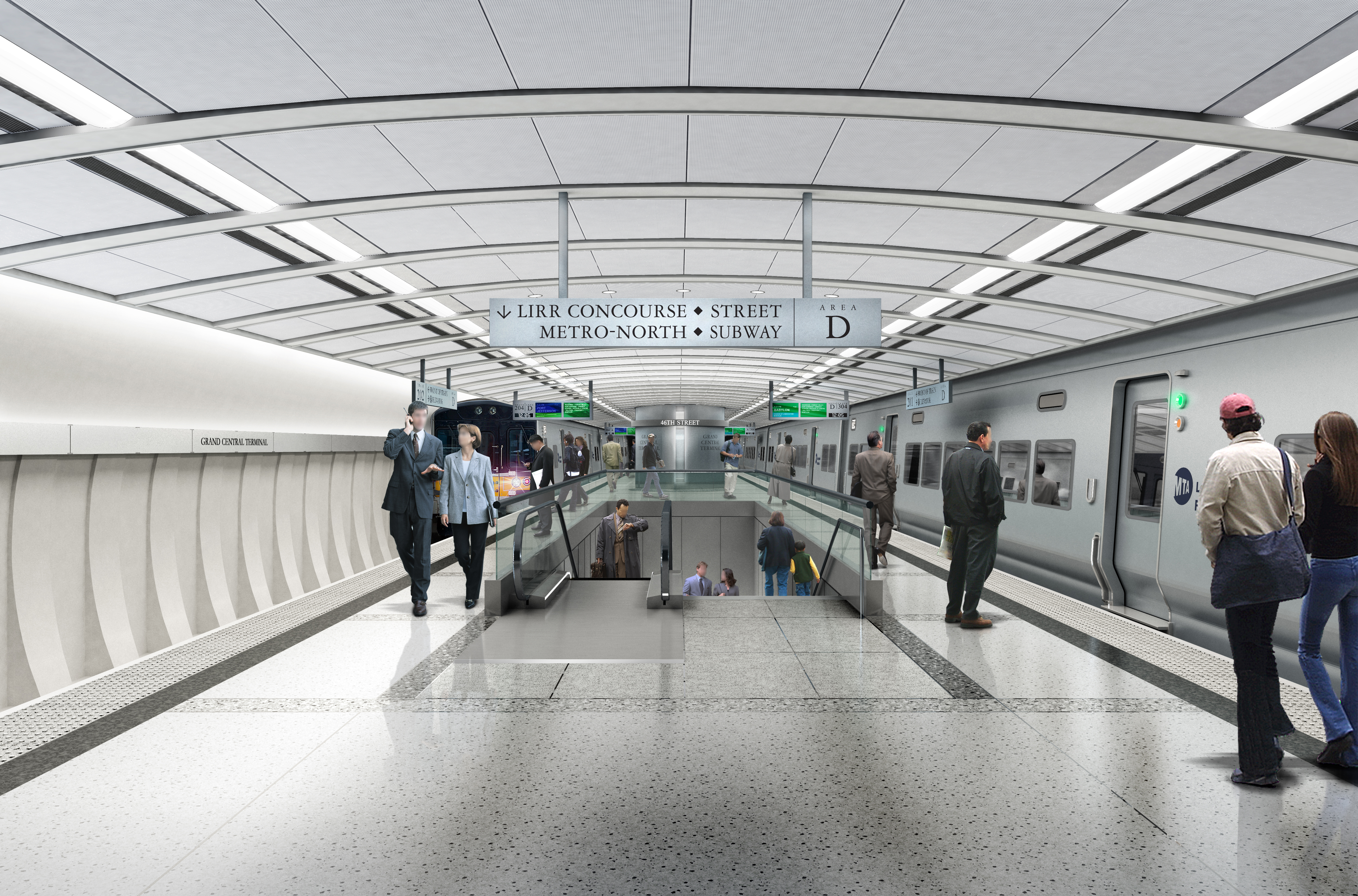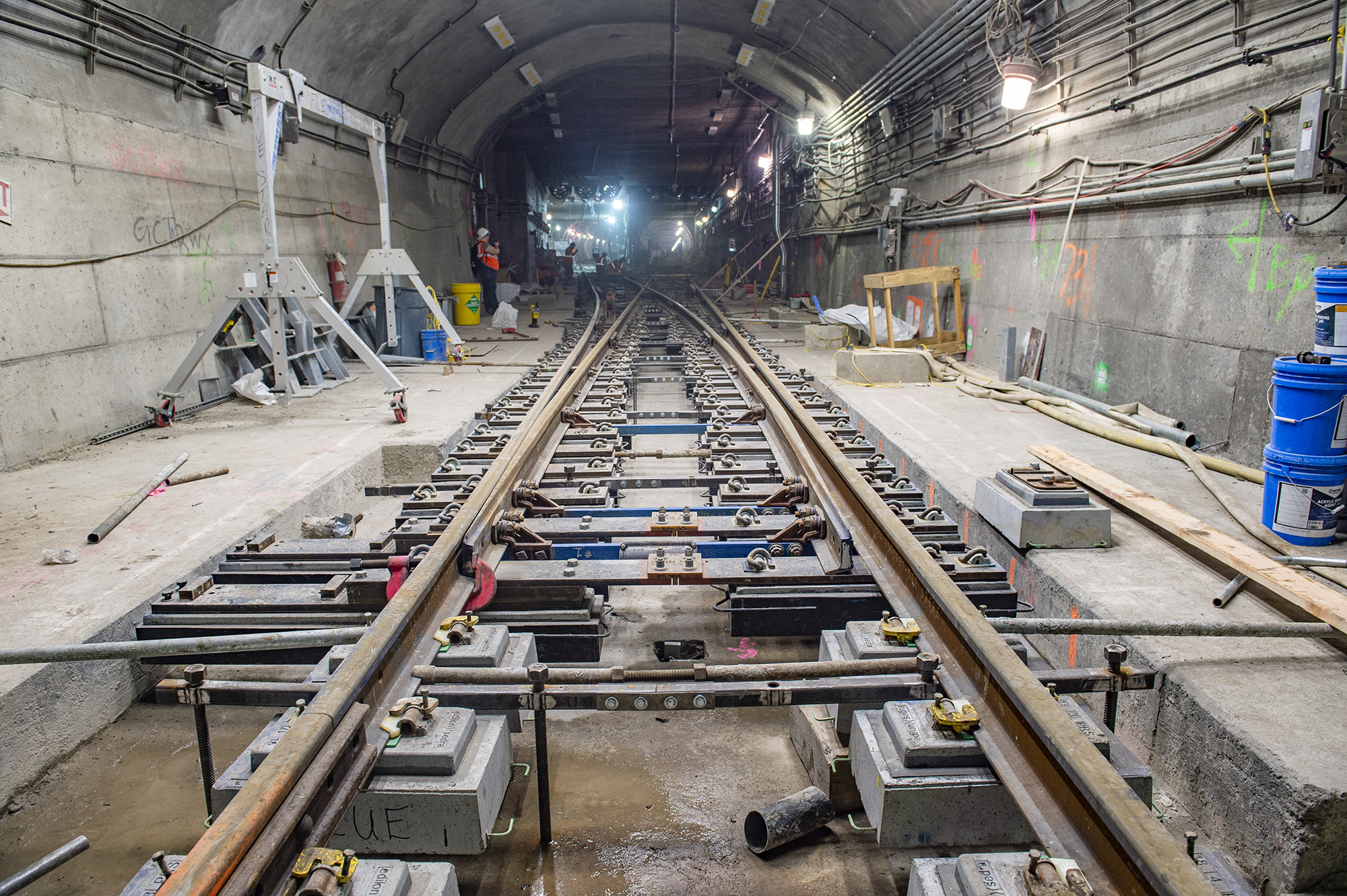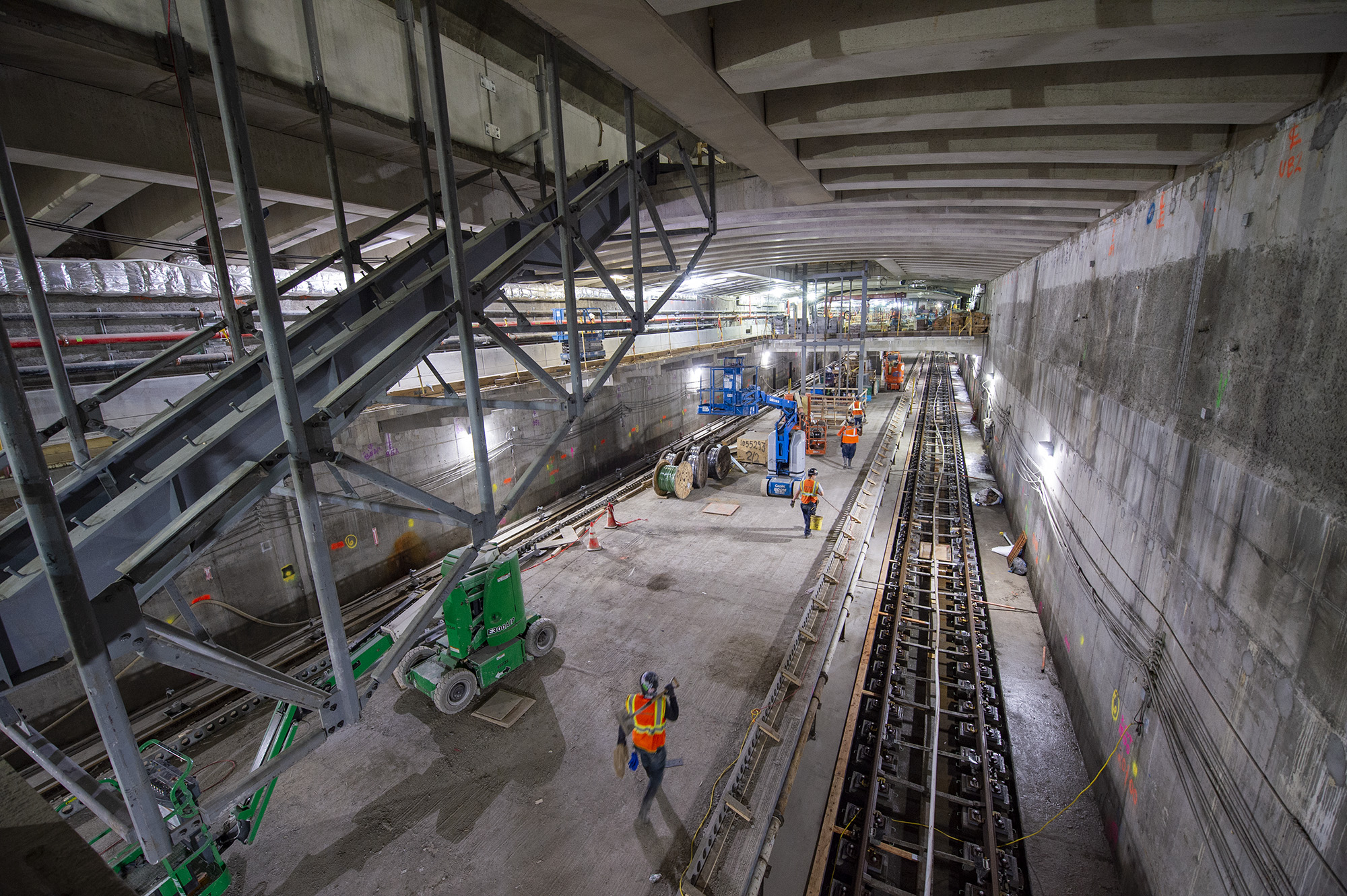The following was published exclusively by The Foggiest Idea on August 1st, 2018. Interested in supporting The Foggiest Idea’s award-winning reporting and analysis? Click here.
By Richard Murdocco
Gazing at the vast expanse of marble and stainless steel spanning the new concourse over one hundred feet below Grand Central Terminal, you could almost feel the rumble of the Long Island Rail Road trains that have been so long in coming. And for a moment it’s easy to become enraptured by the biggest public works project in our lifetime. But no trains are arriving at this station any time soon.
This is the promise of East Side Access, the decades-long, multi-billion-dollar project that would bring the Long Island Rail Road into the heart of Manhattan’s East Side. Long the dream of planners, the notion is closer to coming to fruition as the new passenger pathway takes shape 14 stories beneath Grand Central Terminal. When completed, which the latest estimates say will happen by late 2022, the new LIRR terminal will be the first station built in Manhattan in 90 years, and the first expansion of the railroad’s footprint in over a century.
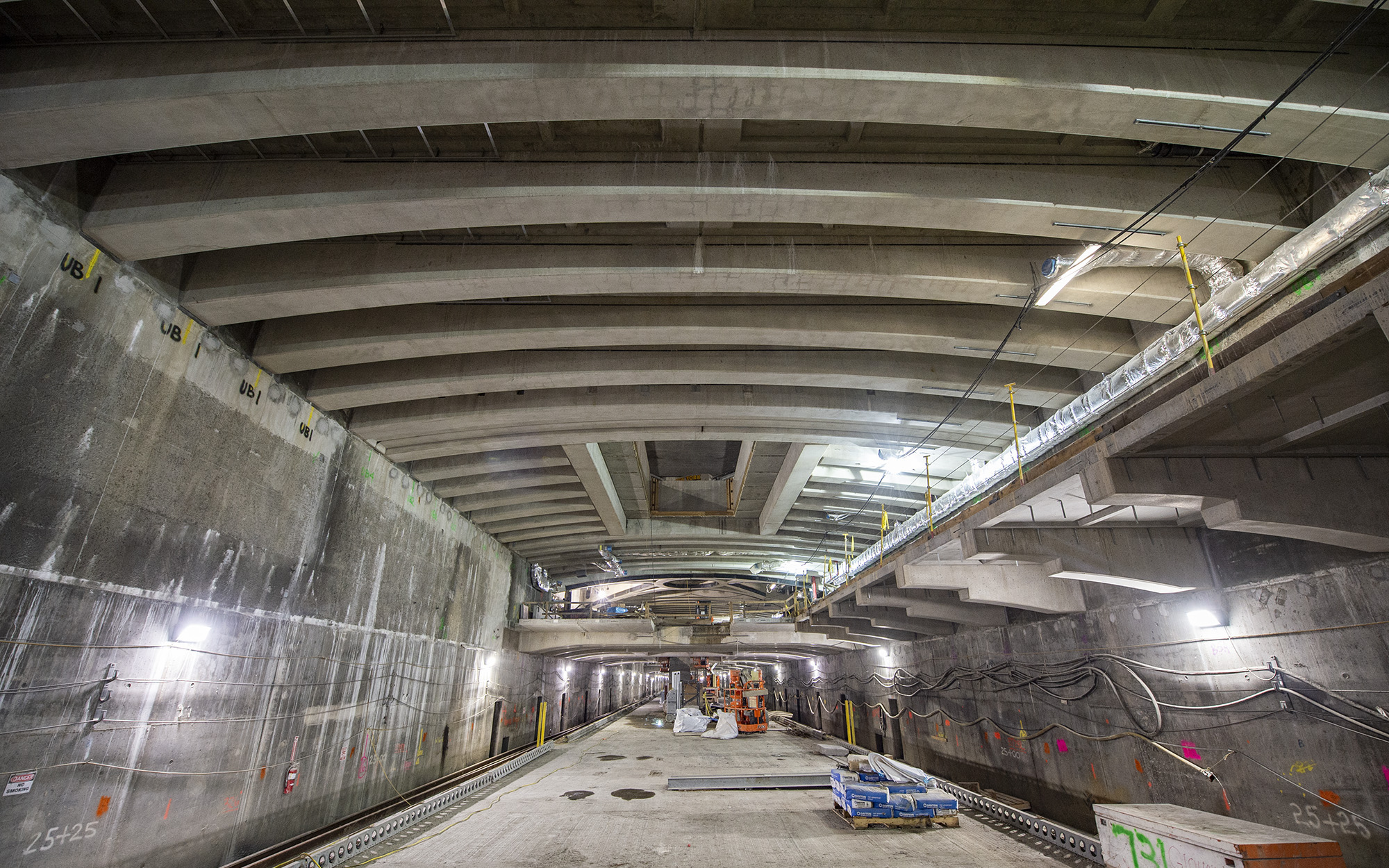
The lower level passenger platform of the project’s East Cavern, as of July 2018.
Photograph: MTA/Trent Reeves
Progress comes at a price. So far, the project has exceeded $11.2 billion – a figure expected to rise further, and a far cry from the original $2.2 billion estimate in 1999. A 2017 investigation last year by The New York Times found that the costs amounted to about $3.5 billion for each new mile of track, or seven times the average cost in Paris or London.
For perspective, it’s not only the MTA’s East Side Access project that has had skyrocketing expenses. According to The Times, the recently completed Second Avenue subway on the Upper East Side cost $2.5 billion per mile, and the 2015 extension of the No. 7 line to Hudson Yards cost $1.5 billion per mile. Elsewhere, a mile of subway track typically costs $500 million a mile or less.
If you ask the MTA, they argue that the construction costs ballooned as the project became more complex because the LIRR decided to shift its new tunnel line down from the original proposal that used the existing level of Metro-North tracks and new federal regulations that mandated positive train control, a safety feature that is designed to prevent train-to-train collisions.
But when you’re underground at the project site, those concerns turn to awe. Taking it all in, the endeavor is clearly monumental. Where the Manhattan schist was once solid bedrock, now there are gigantic caverns and several tunnels stretching under the East River to Queens.
Making it possible are the two German-imported tunnel-boring machines, supposedly blessed by a chaplain before they were put to use and named Tess and Molina by local schoolchildren back in 2011. The rubble Tess and Molina subsequently generated, trucked out through the newly minted tunnels, went on to lay the foundation for various other development projects throughout the Northeast, including Bay Ridge Park in Brooklyn and the Trump Links golf course at Ferry Point in the Bronx. It took four years for the MTA to bore out these new tunnels because unexpected problems arose underground. For example, the silty soils and groundwater of Queens had to be flash-frozen to allow the machines to do their work by Northern Boulevard. That added to the delays and the costs.
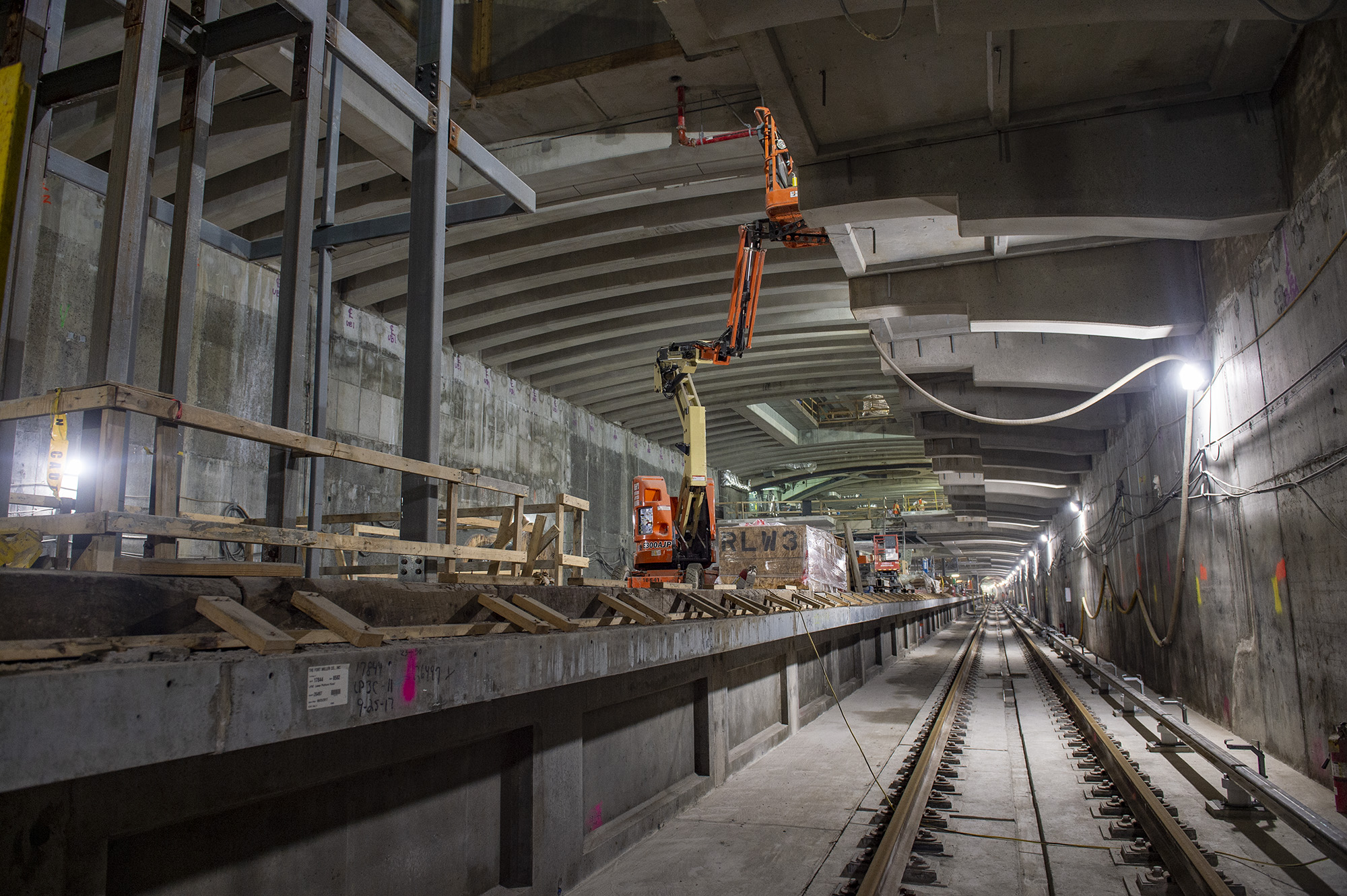
The installed track and 3rd rail in the project’s west cavern, as of July 2018.
Photograph: MTA/Trent Reeves
Meanwhile, helping the new concourse take shape were 4,000 or so massive concrete cross-members manufactured near Saratoga, New York. The agency went to the same quarries in Italy and Turkey that railroad tycoon Cornelius Vanderbilt’s men had used back in the 1860’s to ensure that the marble in the new concourse matches the material found in Grand Central. The MTA adapted the existing 63rd street tunnel’s lower level to accommodate the LIRR trains and it repurposed an existing Metro-North train yard for portions of the new concourse. When complete, the LIRR will have 40 miles of new track and eight new tunnels for riders headed into the city.
Today, the concourse is less cavern and more train station as one track has already being laid down and the others are not too far behind. Acoustic paneling and ceiling accoutrements such as exit signs and smoke detectors are already in place. Near the escalators, where the LIRR commuters of tomorrow will descend 90 feet in one or two minutes, seafoam green subway tiles already accent the walls.
Critics claim the massive project is more “nice to have” than “critically needed.” MTA officials argue it’s the opposite, boasting that when complete, East Side Access will increase the LIRR’s capacity by 46 percent and provide much-needed redundancy in terms of mass-transit access to Manhattan. They reason that commuters will no longer be at the mercy of Amtrak, which can do a number on LIRR trains depending on the other crumbling East River tunnels to reach Penn Station.
Out on Long Island, advocates for East Aside Access insist that once it’s complete along with other projects like the LIRR Third Track, which adds a new line between Floral Park and Hicksville, reverse-commuting options will improve, allowing regional employers to more readily attract talent to Nassau and Suffolk Counties from the five boroughs. The LIRR could face an expected 28% increase in ridership over the next 30 years, and policymakers should commit to preparing the rest of the system for the new demands it will face.
At Penn Station, conditions are expected to improve when the new terminal opens, because far fewer riders will pour in during peak rush hours. In Sunnyside, the location of the LIRR’s Harold interlocking, one of the busiest rail junctions in the country, new signals and switches have been installed, updating a longstanding bottleneck that relied less upon computerized systems and more on mechanical switches that harkened back to the Industrial Revolution. The hopeful result, officials tout, is that commuters traveling into and out of Penn Station will find fewer signal-related problems. Nearby the work at Harold, a new storage yard for the railroad is being carved out of the former Montauk cutoff, an abandoned LIRR rail spur now being reclaimed by the agency.
If the MTA wanted to drum up support for their East Side Access behemoth, which has faced years of criticism due to the ballooning costs and the stretching timelines, allowing laypeople like this writer to enter its depths was one of their better PR moves.
Underground, clouds of dust fill the muggy air while the booming sounds of progress echo from the bare caverns. The thrum of construction could be at any other job site in Manhattan, except that you’re standing at a future rail junction 140 feet below Midtown.
Far above you, the city marches on, with few New Yorkers even aware of the massive public work project below their feet that’s been financed by their tax dollars since 2007 and is slated to continue for the years ahead. If that train ever comes, maybe all these questions will be moot, but until it arrives, you have to wonder why it took so long? And who was taken for a ride?
Richard Murdocco is an award-winning columnist and adjunct professor in Stony Brook University’s public policy graduate program. He regularly writes and speaks about Long Island’s real estate development issues. More of his views can be found on thefoggiestidea.org or follow him on Twitter @thefoggiestidea. You can email Murdocco at Rich@TheFoggiestIdea.org.

